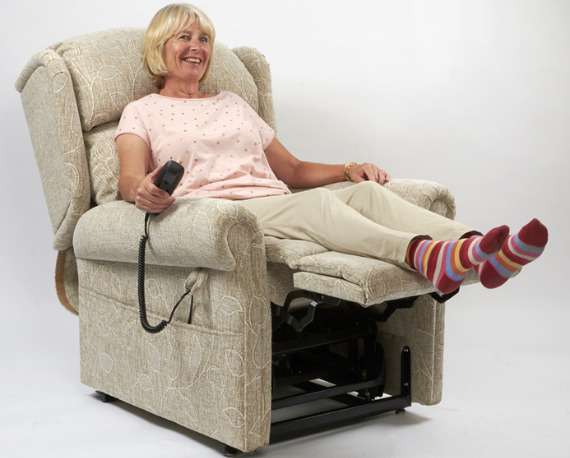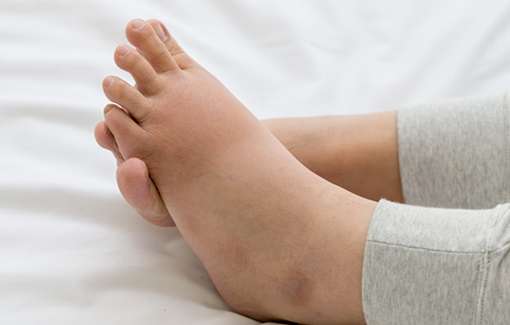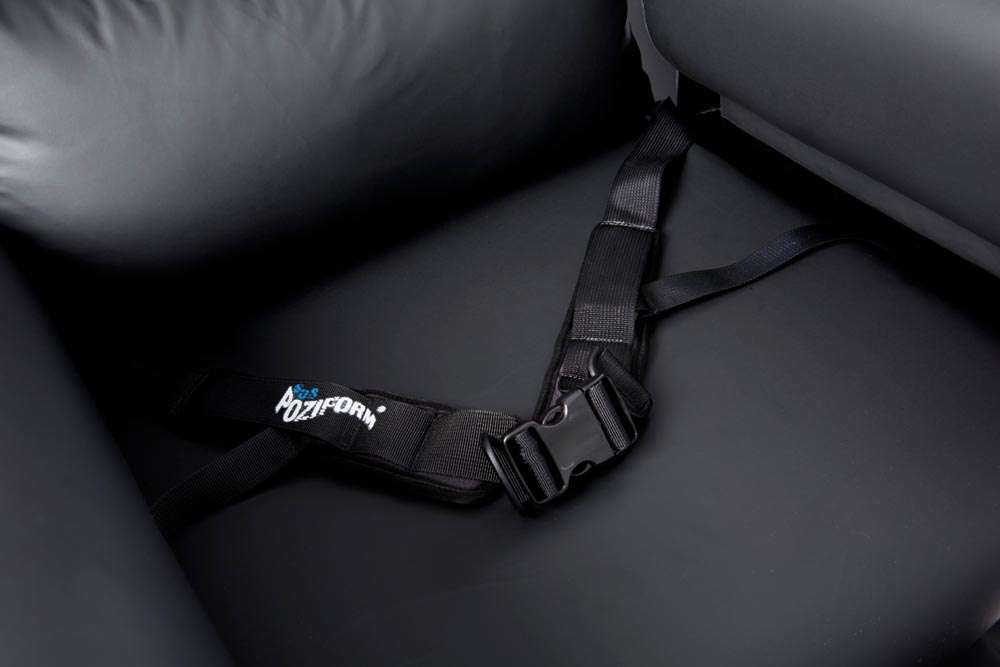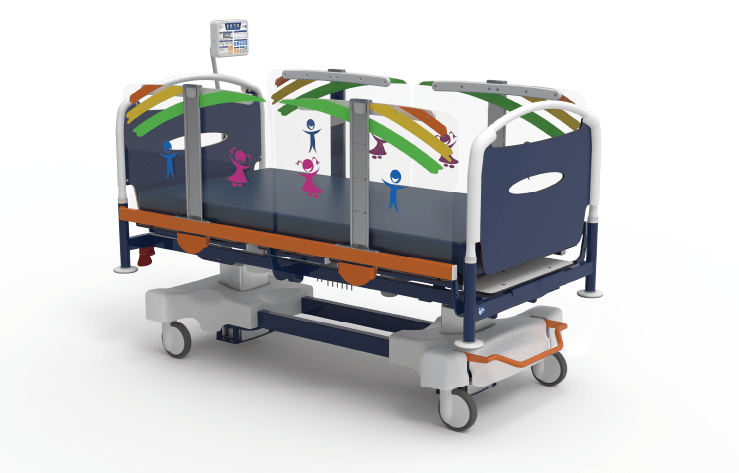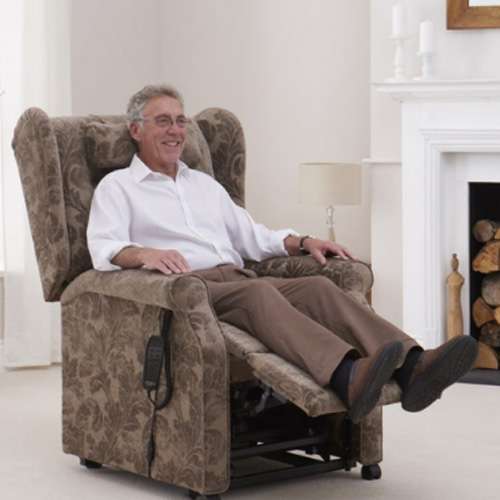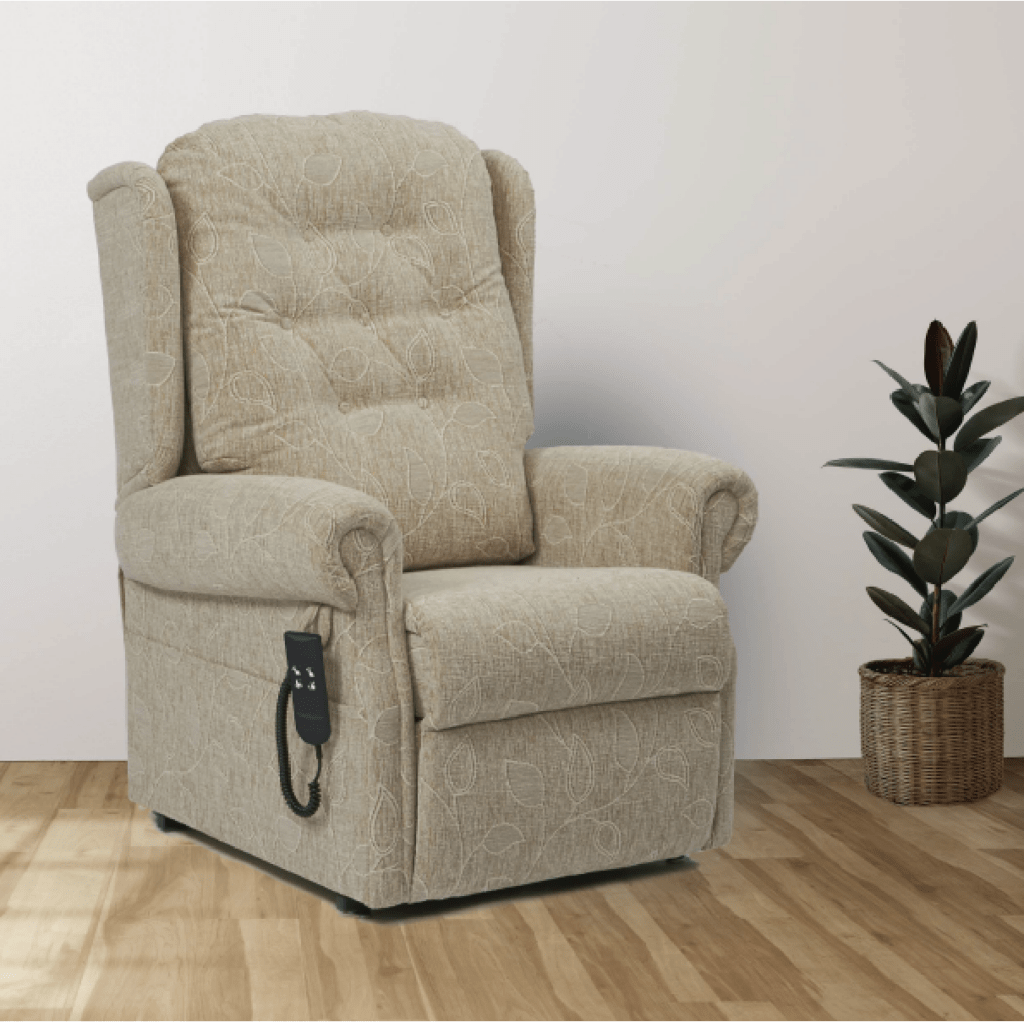A healthy, neutral sitting posture is characterised by a centralised position in the chair, where the legs follow a nice midline position in line with the body.
When seating is incorrectly sized or postural defects occur, the legs can stray away from a centralised position into abducted or adducted positions. Here we look at what this postural defect is, how it can occur, and how seating can correct and bring the legs back into alignment again.
Jump straight to…
Definitions: Abduction vs Adduction in a Seating Context
If you draw a midline down the centre of the body, abduction is where the limb moves away from this midline (to ‘abduct’ someone is to take them away), and adduction is moving the limbs towards this midline (you are moving back towards the midline or ‘adding it back’).
When we look at abduction and adduction as separate postural presentations, we get the following problems:
Abducted legs
The legs are spread too far apart, leaning towards each side of the chair. this could be to do with a variety of seating issues, such as the wrong size chair which is causing the person to slide forward and ‘slouch’, or weakness in their hip abductor muscles.
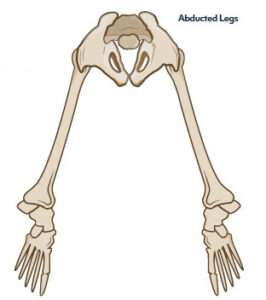
Adducted legs
In seating, adduction describes a posture where the knees are excessively drawn together or crossed, causing alignment issues and potential strain.
Both of these issues can each lead to significant challenges in comfort, alignment, and long-term physical health.

Causes of Abduction and Adduction
Improper Seating Design
Chairs that are the wrong size for the individual and do not support natural body alignment encourage the development of poor posture.
Sitting for extended periods in unsupportive chairs or maintaining awkward positions can exacerbate postural problems like scoliosis, pelvic obliquity or pelvic rotation, all leading to development of unequal leg positioning.
A lack of lateral or pelvic support can also lead to either excessive abduction or adduction of the legs.

Muscle Weakness or Imbalance
Weakness in the hip abductors or adductors can predispose individuals to these postural problems.
Neurological Conditions
Disorders such as cerebral palsy, multiple sclerosis, or stroke can cause muscle tone imbalances, leading to abnormal leg positioning in seating.
Orthopaedic Issues
Joint deformities, arthritis, or leg length discrepancies can also contribute to abnormal leg positioning.
Effects of Abduction and Adduction
Abduction and adduction problems can lead to various health and functional issues, including:
Pain and Discomfort
Improper leg positioning can cause hip, lower back, and knee pain over time.

Reduced Mobility
Prolonged abduction or adduction can restrict movement and make standing or walking more difficult.
Pressure Sores
Abnormal positioning increases pressure on certain areas of the body, elevating the risk of skin breakdown and pressure sores.
A combination of these creates a windswept effect, where one leg moves outward and another inward, so they are ‘swept’ to one side. This can cause further misalignment of the pelvis and greater pressure on certain areas of the buttock and thighs, which can lead to development of pressure sores.

Windswept legs
Impaired Circulation
Crossing legs (adduction) for extended periods can hinder blood flow, leading to swelling and discomfort.
Treatment
The most effective treatments for leg abduction/adduction focus on addressing the underlying causes of the issues. Some key strategies include:
Ergonomic Adjustments
Firstly, the modification or correct specification of seating can achieve the most “low hanging fruit” for people who spend a lot of time seated due to health reasons. Correctly-sized seating goes a long way in reducing strain and encourage better positioning; learn more about how to measure the correct seat size here: How To Measure For Specialist Seating – Vivid Care
Physical Therapy
Targeted exercises can strengthen the hip abductors and adductors to restore balance and improve posture.
Orthopaedic Interventions
Positioning aids like leg harnesses, pommels and knee supports can be used to correct alignment and support better posture.

Positioning aids
Neurological Rehabilitation
For individuals with neurological conditions, therapies that improve muscle tone and control can help mitigate postural issues.
Pain Management
Massage, heat therapy, or medications may be necessary to address discomfort caused by prolonged poor posture, but this is more about managing the symptoms rather than addressing and improving the underlying issues.
Helpful Seating Features
Choosing the right seating solution can make a significant difference in preventing or alleviating abduction and adduction problems. Here are some of the features to look for when specifying seating for someone with abducted or adducted legs:
Adjustability
Chairs with adjustable seat height, tilt, and backrest allow for a personalised fit that supports optimal posture.
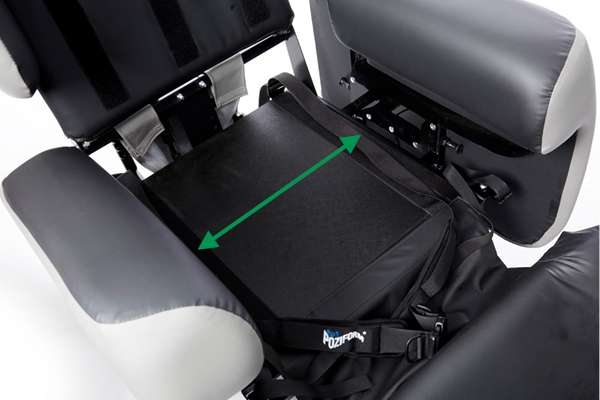
The Lento care chair has adjustable seat width so you can change the chair to match the person’s pelvic positioning if it changes over time.
Pelvic Supports
Pelvic positioning belts or lateral supports help keep the legs and hips properly alignment. The Permobil powerchairs, in particular the Permobil M Corpus VS, has knee straps to keep the legs in position and provide support when using the vertical stand function.

Permobil F5 Corpus VS Electric Wheelchair
Thigh Guides
Specialised cushions with abductor pads or thigh guides can prevent the legs from splaying apart (abduction) or crossing excessively (adduction).
A simpler solution is to use the channelled legrests available with the Lento Care Chair and Lento Neuro, which act as a natural guide to keep the legs in place.

Lento Care Chair articulating legrest
Cushioning and Pressure Relief
Seat cushions designed to distribute weight evenly can minimise pressure and improve comfort.
Conclusion
Addressing abduction and adduction problems in seating requires a multifaceted approach, including proper diagnosis, targeted treatment, and the use of ergonomic seating solutions.
Investing in the right seating solution not only prevents long-term complications but also promotes healthier and more comfortable sitting posture.
Get Expert Advice
FAQs
What are common signs of abduction or adduction problems in seating?
Signs include discomfort, noticeable misalignment of the legs, difficulty maintaining balance, and increased pressure in certain areas of the hips or thighs.
Can poor seating posture lead to permanent damage?
Yes, prolonged poor posture can cause chronic pain, joint misalignment, and other long-term health issues if not addressed.
How often should I adjust my seating position?
To reduce strain, it’s recommended to shift positions every 30-60 minutes and take breaks to stand and stretch.
Are there specific chairs designed for postural issues?
Yes, ergonomic chairs with adjustable features, pelvic supports, and pressure-relieving cushions are ideal for addressing postural problems.
When should I seek professional help for postural problems?
If discomfort persists or if you notice worsening alignment or mobility issues, consult a physical therapist or orthopaedic specialist.





